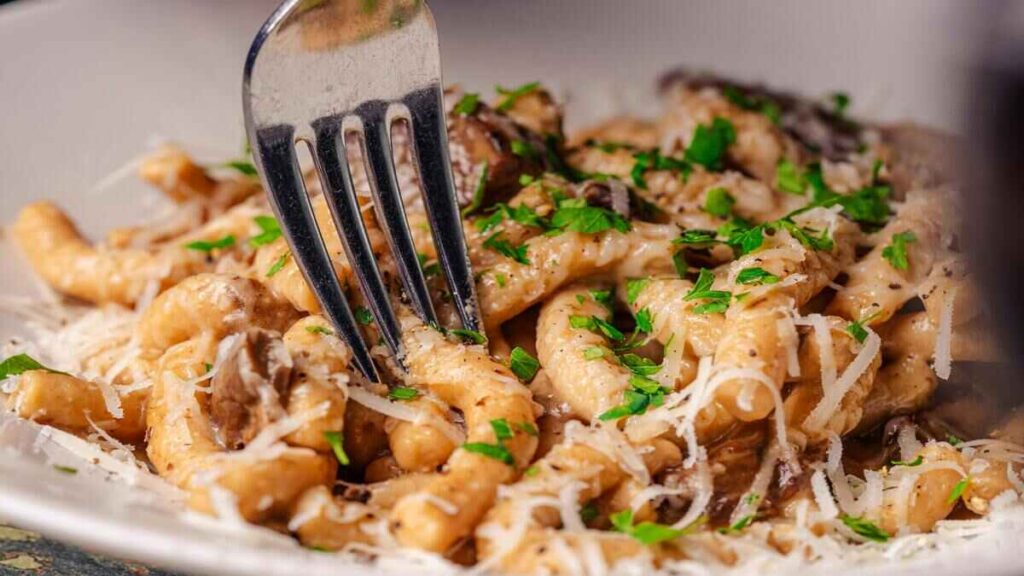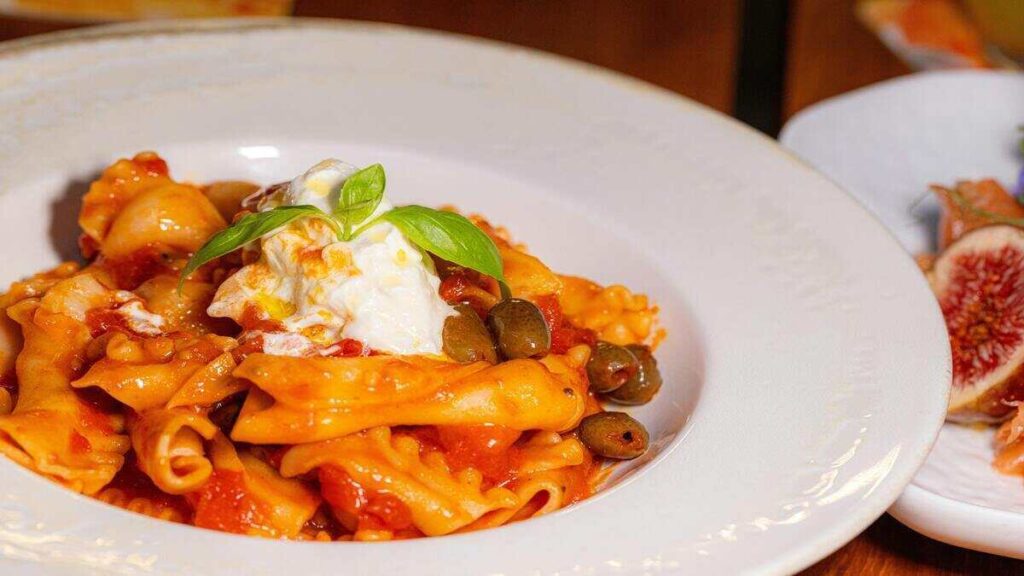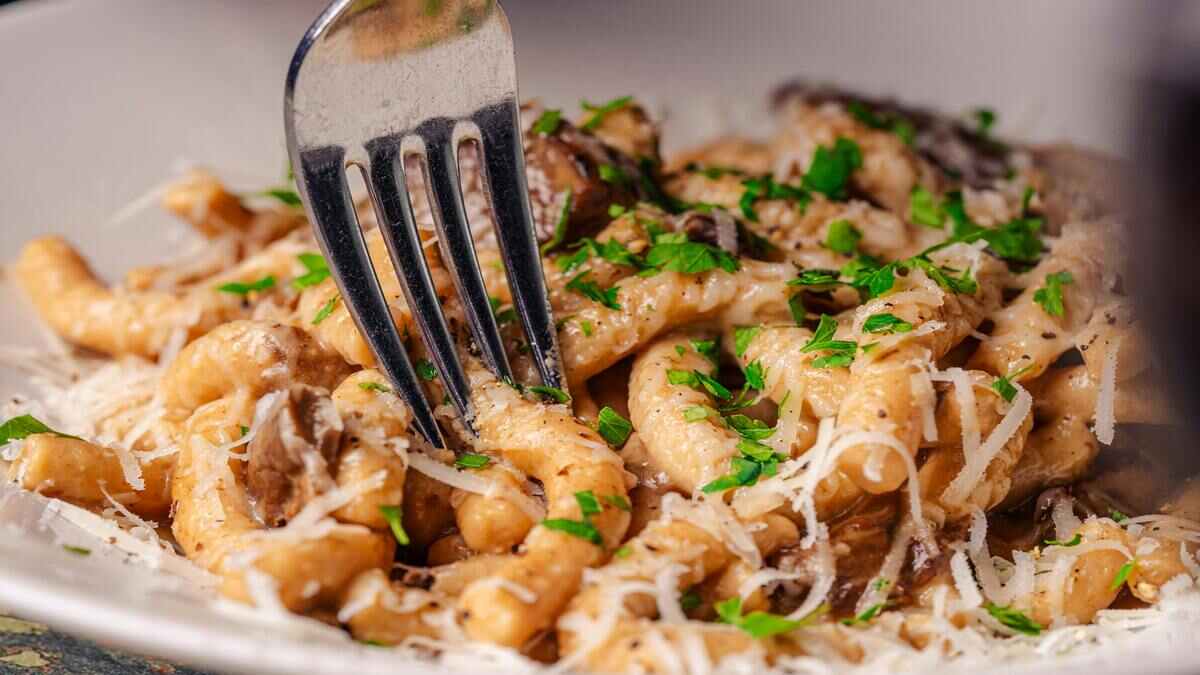If you’re someone who loves a vibrant, veggie-packed meal that doesn’t skimp on flavor, Pasta Primavera Recipe might just be your new go-to dish. This bright, delicious pasta dish is loaded with fresh seasonal vegetables, tossed in a light, yet flavorful sauce, making it the perfect choice for a wholesome and satisfying meal. Whether you’re a fan of pasta or just starting to explore vegetable-based dishes, Pasta Primavera offers a delightful balance of textures, colors, and flavors. Let’s dive into what makes this dish so special.
What is Pasta Primavera Recipe?
At its core, Pasta Primavera Recipe is a simple but stunning Italian-inspired dish that combines pasta with fresh, sautéed vegetables. The vegetables used can vary depending on what’s in season, but common choices include bell peppers, zucchini, cherry tomatoes, asparagus, peas, and spinach. The vegetables are lightly cooked to preserve their crunch and natural flavors, then mixed with pasta and often finished with a drizzle of olive oil or a light cream sauce.
Unlike heavier pasta dishes that rely on meat or rich sauces, Pasta Primavera is all about fresh ingredients, making it a lighter, healthier choice. It’s the perfect dish for spring or summer when fresh produce is at its peak, but it can be enjoyed year-round with a variety of vegetables.
Origin of Pasta Primavera Recipe
The origins of Pasta Primavera Recipe are somewhat murky, with competing stories surrounding its creation. Most food historians agree that the dish, as we know it today, has American roots rather than Italian. It’s believed to have been created in New York City in the 1970s, possibly by chef Sirio Maccioni at his restaurant, Le Cirque. According to popular lore, Maccioni was inspired by the arrival of fresh, seasonal vegetables and wanted to create a dish that showcased their vibrant flavors. The dish quickly gained popularity and became a staple of Italian-American cuisine.
While Pasta Primavera may not have a long history in Italy, it has since been embraced by Italian restaurants worldwide and remains a beloved dish that captures the essence of fresh, healthy eating.
Ingredients for Pasta Primavera Recipe
One of the reasons Pasta Primavera is so popular is because it can be easily customized based on your preferences and the vegetables available to you. Here’s a list of common ingredients that come together to make this flavorful dish:
For the Pasta:
- Pasta: You can use any type of pasta for Pasta Primavera, but long pasta like spaghetti, fettuccine, or linguine are the most traditional. Short pasta such as penne or rotini can also work well.
For the Vegetables:
- Bell Peppers: Red, yellow, or orange bell peppers add a sweet crunch.
- Zucchini: Thinly sliced or chopped, zucchini adds a mild, fresh flavor.
- Asparagus: Lightly sautéed asparagus provides an earthy taste and a beautiful texture.
- Cherry Tomatoes: Halved or quartered, tomatoes add juiciness and color to the dish.
- Peas: Sweet peas add an extra burst of sweetness and contrast with the other veggies.
- Spinach or Arugula: These leafy greens bring an added layer of texture and bitterness, balancing the sweetness of the other vegetables.

For the Sauce:
- Olive Oil: Extra virgin olive oil is the base of the sauce, giving the dish a rich, fruity flavor.
- Garlic: A little garlic is sautéed to infuse the oil with flavor.
- Lemon Zest or Lemon Juice: For a refreshing, zesty kick.
- Parmesan Cheese: Freshly grated Parmesan adds depth and a nutty, salty flavor.
- Fresh Herbs: Basil, parsley, or oregano are great options to finish off the dish.
Optional Ingredients:
- Cream or Butter: Some versions of Pasta Primavera use a light cream sauce or butter to make it richer.
- Red Pepper Flakes: For a bit of heat and spice.
Equipment Needed for Pasta Primavera Recipe
Making Pasta Primavera doesn’t require any special equipment, but having a few essential kitchen tools will make the process easier and more efficient. Here’s what you’ll need:
- Large Pot: For cooking the pasta.
- Large Skillet or Pan: To sauté the vegetables and make the sauce.
- Colander: For draining the pasta once it’s cooked.
- Cutting Board and Knife: For chopping the vegetables.
- Tongs or Pasta Spoon: To mix the pasta and vegetables together.
- Grater: For fresh Parmesan cheese.
Step-by-Step Preparation of Pasta Primavera Recipe
Now that you have all your ingredients ready, let’s walk through the process of making Pasta Primavera from start to finish. It’s a simple dish to prepare, but the flavors are incredibly satisfying.
Step 1: Cook the Pasta
Start by bringing a large pot of salted water to a boil. Add your pasta and cook according to the package directions, typically around 8-10 minutes for al dente pasta. Once done, drain the pasta, reserving a cup of pasta water for later. Set the pasta aside.
Step 2: Sauté the Vegetables
While the pasta is cooking, heat some olive oil in a large skillet over medium heat. Add your garlic and sauté for about 1 minute, until fragrant. Next, add the vegetables that take the longest to cook, like bell peppers and asparagus. Sauté for 4-5 minutes, then add the quicker-cooking vegetables, like zucchini and peas, and continue sautéing for another 3-4 minutes until all the vegetables are tender but still have a slight crunch.
Step 3: Combine the Pasta and Vegetables
Once the vegetables are cooked, add the cooked pasta to the skillet with the veggies. Toss everything together, ensuring the pasta is coated in the oil and vegetable juices. If the mixture feels a bit dry, add some of the reserved pasta water to help loosen it up and create a light sauce.
Step 4: Add Flavor
Now it’s time to add the finishing touches. Squeeze in some fresh lemon juice or zest, then stir in the grated Parmesan cheese. Toss everything together until the cheese has melted into the dish, creating a creamy, flavorful coating. Season with salt, pepper, and red pepper flakes (if using) to taste. You can also sprinkle in some fresh herbs for extra flavor.
Step 5: Serve
Serve the Pasta Primavera hot, garnished with additional Parmesan and fresh herbs. It’s a light yet satisfying dish that’s perfect for any occasion.
Health Benefits of Pasta Primavera
Pasta Primavera Recipe is more than just a delicious dish – it’s also packed with health benefits, thanks to its abundance of vegetables. Here are a few reasons why you can feel good about enjoying this meal:

- Packed with Nutrients: The fresh vegetables in Pasta Primavera are rich in vitamins, minerals, and antioxidants. Bell peppers, for example, are high in Vitamin C, while spinach provides a good amount of iron and folate.
- Fiber-Rich: Vegetables like zucchini, asparagus, and peas are all high in fiber, which is essential for digestive health and keeping you feeling full.
- Healthy Fats: The olive oil used to sauté the vegetables adds heart-healthy fats, which can help reduce inflammation and support overall health.
- Customizable for Special Diets: Pasta Primavera can easily be made gluten-free, vegetarian, or vegan, making it suitable for a wide variety of dietary preferences.
Additional Information
- Customizations: Pasta Primavera is highly versatile. You can switch up the vegetables based on the season, or add protein like grilled chicken, shrimp, or even tofu for a heartier meal.
- Make-Ahead: You can prep the vegetables and pasta in advance to make the cooking process faster on busy nights.
- Leftovers: The dish keeps well in the refrigerator for 2-3 days, making it great for meal prep or enjoying as leftovers.
Best Way to Serve Pasta Primavera Recipe
Pasta Primavera Recipe is best served immediately after preparation when the vegetables are still slightly crisp and the pasta is warm. For the most authentic experience, serve it as a light main course or as a side dish alongside grilled meats or seafood. Here are a few ideas on how to serve it:
- As a Main Course: Enjoy it on its own as a light and healthy meal, perfect for lunch or dinner.
- With Grilled Chicken or Shrimp: Pair it with a lean protein like grilled chicken or shrimp to make it more filling.
- As a Side: Serve it alongside grilled steak, roasted chicken, or a piece of fish for a complete meal.
Calories, Prep Time, and Cook Time
| Metric | Amount |
| Calories per Serving | 350-450 calories (depending on portion size and added ingredients) |
| Prep Time | 15 minutes |
| Cook Time | 15-20 minutes |
| Total Time | 30-35 minutes |
Conclusion
Pasta Primavera Recipe is a celebration of fresh, vibrant vegetables and light, delicious pasta. It’s a dish that’s easy to prepare, and it offers a world of flavors and textures in every bite. Whether you’re looking for a healthy meal, a comforting pasta dish, or a way to showcase seasonal produce, Pasta Primavera is the perfect choice. With its versatility, it can easily be adapted to suit your tastes, dietary preferences, or whatever vegetables are in season.
So, why not give it a try? Fresh, flavorful, and satisfying—Pasta Primavera is a dish you’ll want to make again and again.
FAQs About Pasta Primavera Recipe
1. Can I use other vegetables in Pasta Primavera Recipe?
Absolutely! Feel free to swap out or add any vegetables you like, such as broccoli, carrots, or even mushrooms.
2. Can I make Pasta Primavera ahead of time?
Yes, you can prepare the vegetables and cook the pasta in advance. Just store them separately and combine them when you’re ready to serve.
3. Is Pasta Primavera gluten-free?
You
